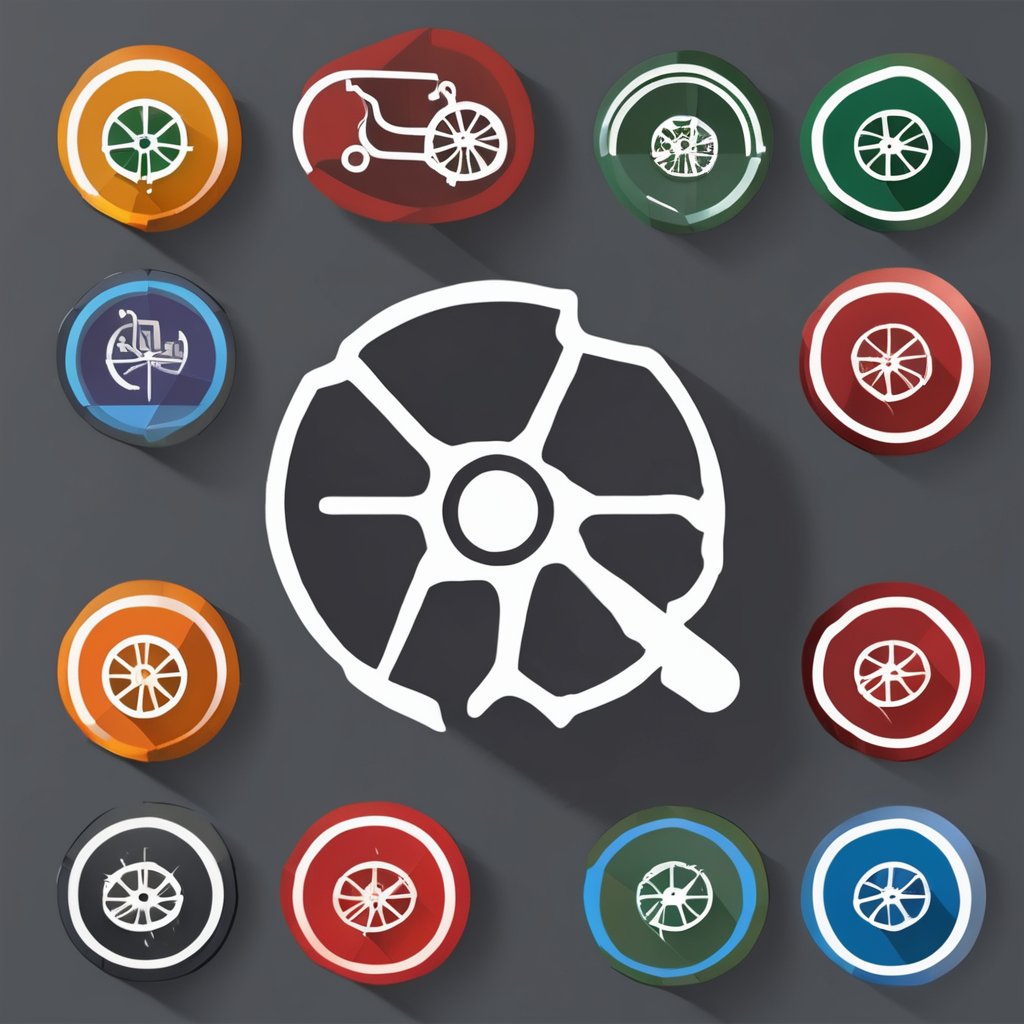Understanding Suspension Dynamics
Exploring the dynamics of a suspension system reveals its critical role in both everyday riding and off-road performance. Each component of the suspension, including shock absorbers, springs, and dampers, plays a specific role in maintaining stability and control. Suspension tuning is essential for improving how a vehicle handles diverse challenges.
The importance of a well-tuned suspension cannot be overstated when it comes to off-road adventures. It significantly enhances traction by ensuring that the tyres remain in contact with uneven surfaces. This improves control and comfort, making it a key factor for off-road enthusiasts. Proper suspension tuning provides a balanced ride by effectively absorbing shocks from rocky or bumpy terrains.
In the same genre : Choosing the Optimal Coolant for Your Triumph Speed Triple in Scorching Climates
Understanding how the different suspension components interact, and how their settings impact dynamics is crucial. Adjusting elements like damping and spring rates can elevate the ride quality. The most effective setup will depend on the rider’s preferences, vehicle weight, and intended terrain. Mastering these concepts can lead to optimized off-road performance and a more enjoyable riding experience. This interplay of components highlights the meticulous suspension tuning process, which tailors the vehicle’s responsiveness to the track’s demands.
Suspension Setup for Different Terrains
Optimizing your bike’s suspension for distinct terrain types is essential for enhancing your riding experience. The process involves meticulous setup techniques to match the riding conditions. Whether tackling rocky paths or sandy expanses, a tailored approach is vital.
Additional reading : Comprehensive diy manual: detecting and fixing fuel injector problems on your bmw s1000xr
Adjusting for Terrain
-
Rocky Terrains: Prioritize stability by adjusting the suspension to handle sharp impacts. Enhance control with firm compression and rebound settings.
-
Sandy Terrains: Focus on smooth rides by softening the suspension. Increased preload can prevent the bike from sinking, offering better floatation over loose sand.
Understanding adjustment factors is key. Preload changes impact the bike’s sag, altering the suspension’s initial position. Compression adjustments determine how quickly the suspension stiffens under pressure, while rebound settings control how fast it returns to the original position.
Considerations
Selecting the right setup techniques depends on evaluating:
-
Surface Consistency: Shift settings for mixed terrains to balance between hardness and give.
-
Riding Style: Personal technique influences suspension dynamics. Aggressive riders may prefer stiffer settings for responsiveness.
Mastering these adjustments leads to enhanced terrain optimization, offering rides tailored to your comfort and performance needs.
Steps to Fine-Tune Your Honda CRF1100L Africa Twin Suspension
Fine-tuning the suspension of your Honda CRF1100L Africa Twin can dramatically enhance performance across various terrains. This section will guide you through the essential steps and adjustments to optimize your riding experience.
Preparing for Adjustment
Before diving into adjustments, it’s critical to ensure your tools are ready. A comprehensive pre-ride checklist includes checking tyre pressure, cleaning the suspension components, and having essential tools like wrenches and measuring tapes. Completing these checks helps in setting a baseline for adjustments, providing consistency and accuracy throughout the process.
Step-by-Step Tuning Guide
Start with measuring and adjusting sag, which affects the bike’s balance. Then move to compression and rebound settings. Aim for a balanced setup by gradually testing different settings, riding your target terrain, and noting changes. Pay close attention to how these technical adjustments change the bike’s handling and comfort, tweaking as necessary for the best results.
Common Mistakes to Avoid
Avoid the pitfall of making drastic changes. Incremental adjustments are key to preserving suspension dynamics while improving off-road performance. Overlooking maintenance tips can also lead to premature wear and stressed components, reducing the effectiveness of your setup.
Best Practices for Suspension Maintenance
Ensuring the longevity and performance of your vehicle’s suspension system is critical. Regular inspection and maintenance routines are essential for optimal operation, particularly for off-road vehicles where terrain can be unforgiving. Start by consistently checking for any visible signs of wear or damage. Components like bushings, seals, and joints should be evaluated for cracks, tears, or leaks.
Lubrication is a key part of suspension maintenance tips. It minimises friction and prevents wear, especially in moving parts like pivots and bearings. Applying the appropriate lubricant periodically can extend the life of the parts and maintain ride quality. Additionally, replacing worn parts before they fail is crucial. Parts showing significant degradation or those near their end of life should be replaced promptly to avoid compounded damage.
Recognising early signs of suspension failure can prevent costly repairs. Symptoms such as increased vibration, unusual noises, or a noticeable change in vehicle handling are indicators that attention is needed. Proactively addressing these issues fosters not only enhanced driving performance but also ensures safety during your rides. Regular maintenance forms the backbone of a resilient suspension system.
Popular Modifications for Enhanced Off-Road Performance
Exploring suspension modifications for off-road performance can significantly elevate your riding experience. Seeking upgrades tailored to your specific needs is crucial for handling rugged terrains.
Review of Effective Upgrades
Successful suspension upgrades often focus on enhancing damping and spring sensitivity. Aftermarket options like high-performance shocks contribute to increased load-bearing capacity, crucial for challenging rides. Enhanced shocks offer better energy absorption, leading to smoother rides on bumpy trails.
User Modifications with Successful Outcomes
Riders frequently report success with modifications including adjustable shock absorber kits. These modifications enable fine-tuning to meet individual preferences and terrain challenges. User feedback emphasizes improved stability and responsiveness after such upgrades.
It’s essential to factor in the costs when considering modifications. High-quality aftermarket options can be costly but are often justified by the enhanced performance they bring. Budgeting should consider both the initial investment and the ongoing maintenance required for these advanced components.
Embracing community insights helps in choosing the right modifications. Sharing experiences offers guidance on which upgrades yield the best performance improvements within budget constraints.
Visual Aids and Resources
In the realm of suspension tuning, visual tools are invaluable for both beginners and experts seeking a deeper understanding. Diagrams provide clear illustrations of suspension components, aiding in grasping their individual and collective functions. Instructional videos offer step-by-step guidance, showcasing setup techniques and varying settings adjustments crucial for terrain optimization.
Recommended Resources
For those venturing into detailed suspension tuning, numerous online platforms host a wealth of instructional content. Websites dedicated to off-road performance and mechanical forums provide extensive guides. Community-shared videos often highlight real-world examples, showing the practical application of techniques such as preload and compression adjustments on different terrains.
Visual Content Benefits
Visual content makes complex concepts like fine-tuning more accessible. Diagrams can simplify understanding by breaking down suspension dynamics into digestible parts. They also facilitate error identification, allowing riders to spot maintenance tips overlooked during setup. Videos offer a dynamic perspective; seeing modifications executed can clarify written instructions and bolster confidence in applying the adjustments independently.
Exploring these visual aids not only enhances comprehension but also empowers riders. By engaging with these tools, riders can refine their setups, ultimately leading to improved performance tailored to their unique riding conditions.
User Experiences and Testimonials
Learning from others’ rider feedback and their experiences with suspension setups can provide unique insights into the process. Many riders share their success stories with suspension tuning, highlighting how small adjustments yielded significant improvements. Adjusting preload and compression rates often emerges as a common theme in enhancing ride comfort and optimizing terrain adaptability.
Community insights reveal that even minor changes can dramatically alter the bike’s handling, offering smoother rides and improved traction on varied surfaces. Some riders report challenges, like achieving the perfect balance between stiffness and comfort. They share practical solutions such as gradual tweaks and trial runs on familiar tracks to monitor changes in real-time.
Participants frequently gather in forums or social media groups to discuss their shared experiences. These platforms help riders exchange tips and troubleshoot common issues, providing a support network for both novices and seasoned riders. Emphasising the impact of collective wisdom, users often credit the advice from these communities with aiding their understanding of complex setups and helping them achieve their desired off-road performance. Engaging with these conversations can inspire confidence and foster a deeper comprehension of suspension dynamics.











